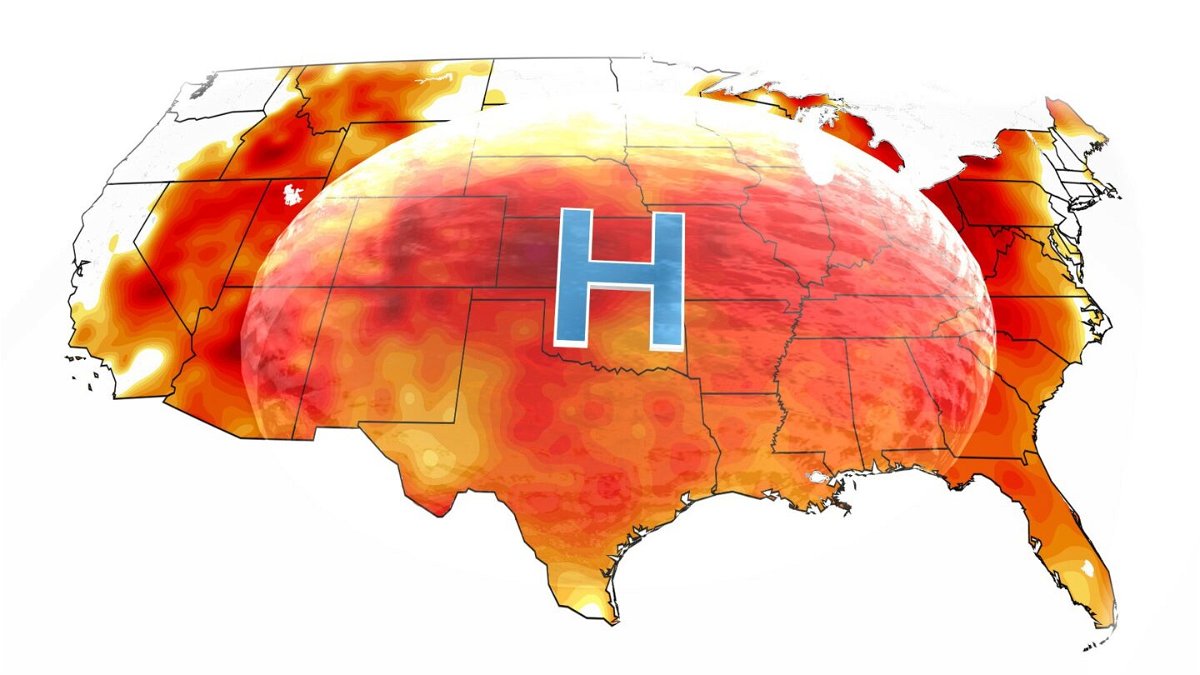A break from the record heat is coming, but it won’t last long

Starting June 16
By Allison Chinchar and Monica Garrett, CNN Meteorologists
More than 65 million people in over a dozen states are under heat alerts Thursday. From the Ohio and Mississippi Valleys to the Southeast, temperatures will be in the upper 90s, with heat index levels well into the triple digits.
Power outages continue for a third day in Ohio. Over 65,000 customers are still without power in the state, where heat advisories remain on Thursday. Another 137,000 customers are without power in Wisconsin and Michigan, where temperatures will also be up to 10 degrees above normal.
Starting Thursday, a downward trend in the heat and humidity will begin to take shape across states in the Upper Midwest like Minnesota and the Dakotas. The brief reprieve will shift into the Ohio Valley, Mid-Atlantic and Northeast this weekend. On Saturday, temperatures will be 10 to 25 degrees below normal from Columbus, Ohio, to Portland, Maine.
On Thursday, Cleveland, Ohio, will top out at 90 degrees, but by the time Saturday rolls around just 48 hours later that high temperature will drop to 70 degrees.
Philadelphia will see a similar drop in 24 hours, from a high temperature of 91 degrees on Friday to a Saturday high of 75 degrees.
While some areas will be getting a reprieve from the heat, the Northern Plains will see the mercury begin to reach record levels once again. From Lincoln, Nebraska, up through Fargo, North Dakota, temperatures will reach triple digits by the end of this weekend. The heat wave focused over the Northern Plains this weekend will be 20 to 25 degrees above normal.
By Monday that heat dome will move eastward to the Midwest and South, setting up another record-breaking week, and cutting short the reprieve from the heat many of these states will get the next few days.
Chicago’s high temperature on Sunday is only expected to reach 67 degrees, but by Monday that high skyrockets to 95 degrees.
Raleigh, North Carolina, will experience a roller coaster of temperatures the next few days, going from a high of 98 degrees Friday to a high of 84 degrees Sunday, then back up to a forecast high of 100 by Wednesday.
Heat is the No. 1 cause of weather-related deaths in the United States, and providing guidance about the likelihood of heat-related ailments — including cramps, exhaustion, stroke and possibly death — helps protect the public in extreme heat.
However, sometimes the hot overnight low temperatures are just as much to blame as the daytime high temperatures.
“Your body requires cooling off at night, and actually expects it while you’re sleeping,” said Jenn Varian, a meteorologist at the National Weather Service Las Vegas office. “When we have very warm overnight temperatures, your body is simply not able to cool off properly, which in (and) of itself can cause complications, but will set you up to be less prepared for the daytime heat as well.”
How hot will your overnight low temperatures be? >>>
Temperatures need to drop to at least 80 degrees for recovery to begin. In fact, a person can lose up to two liters of fluid overnight through sweating if the temperature never drops below 85 degrees.
Dozens of cities could break hottest morning low temperature records over the next five days. Even more of those records are expected next week across the Midwest, Southeast and Mid-Atlantic.
Correction: A previous version of this story misstated how many customers are without power in Wisconsin and Michigan. It’s 137,000.
The-CNN-Wire
™ & © 2022 Cable News Network, Inc., a WarnerMedia Company. All rights reserved.



